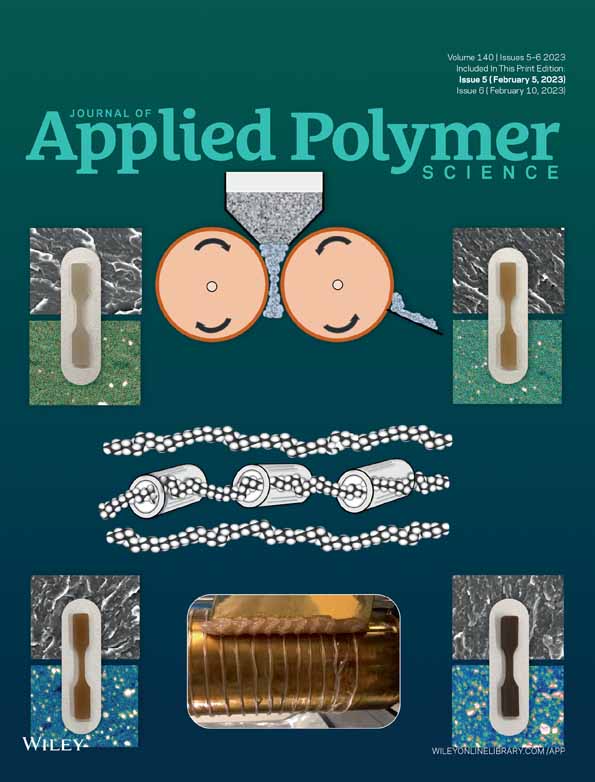Polyphenylalanine ionic liquid for the extraction and determination of Allura red in food samples
Funding information: National Natural Science Foundation of China, Grant/Award Number: 21375117; Priority Academic Program Development of Jiangsu Higher Education Institutions
Abstract
Poly amino acids ionic liquid {3-(3-(7-(diethylamino)-2-carbonyl-2 h-amino-3-propyl)-1-ethyl Bromo imidazole P[Phe][EMI]} was synthesized and characterized with Fourier transform infrared spectroscopy (FTIR), hydrogen nuclear magnetic resonance (1H-NMR), and scanning electron microscopy (SEM). A novel method based on solid-phase extraction and high-performance liquid chromatography for the detection of Allura red (AR) was established. Under optimized conditions, the linear range of AR was 0.01–10.00 μg ml−1, the limit of detection (LOD) was 0.004 μg ml−1 and the enrichment factor was 12.5 (volume of solution/volume of elution). The isothermal adsorption, kinetic model, and Gaussian calculation model was explained by the adsorption mechanism of AR on P[Phe][EMI]. The method was applied to the analysis of real samples with recoveries of 92.0%–102.2% and relative standard deviations of 1.0%–4.6%.
Open Research
DATA AVAILABILITY STATEMENT
The data that support the findings of this study are available from the corresponding author uponreasonable request.




